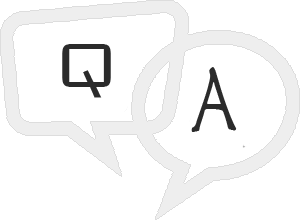
- Design Patterns Tutorial
- Design Patterns - Home
- Design Patterns - Overview
- Design Patterns - Factory Pattern
- Abstract Factory Pattern
- Design Patterns - Singleton Pattern
- Design Patterns - Builder Pattern
- Design Patterns - Prototype Pattern
- Design Patterns - Adapter Pattern
- Design Patterns - Bridge Pattern
- Design Patterns - Filter Pattern
- Design Patterns - Composite Pattern
- Design Patterns - Decorator Pattern
- Design Patterns - Facade Pattern
- Design Patterns - Flyweight Pattern
- Design Patterns - Proxy Pattern
- Chain of Responsibility Pattern
- Design Patterns - Command Pattern
- Design Patterns - Interpreter Pattern
- Design Patterns - Iterator Pattern
- Design Patterns - Mediator Pattern
- Design Patterns - Memento Pattern
- Design Patterns - Observer Pattern
- Design Patterns - State Pattern
- Design Patterns - Null Object Pattern
- Design Patterns - Strategy Pattern
- Design Patterns - Template Pattern
- Design Patterns - Visitor Pattern
- Design Patterns - MVC Pattern
- Business Delegate Pattern
- Composite Entity Pattern
- Data Access Object Pattern
- Front Controller Pattern
- Intercepting Filter Pattern
- Service Locator Pattern
- Transfer Object Pattern
- Design Patterns Resources
- Design Patterns - Questions/Answers
- Design Patterns - Quick Guide
- Design Patterns - Useful Resources
- Design Patterns - Discussion
- Selected Reading
- UPSC IAS Exams Notes
- Developer's Best Practices
- Questions and Answers
- Effective Resume Writing
- HR Interview Questions
- Computer Glossary
- Who is Who
Design Patterns Online Quiz
Following quiz provides Multiple Choice Questions (MCQs) related to Design Patterns Framework. You will have to read all the given answers and click over the correct answer. If you are not sure about the answer then you can check the answer using Show Answer button. You can use Next Quiz button to check new set of questions in the quiz.

Answer : A
Explanation
true. It is possible to get a clone of singleton object. Throw exception within the body of clone() method to prevent cloning.
Q 2 - Which of the following describes the Adapter pattern correctly?
A - This pattern builds a complex object using simple objects and using a step by step approach.
B - This pattern refers to creating duplicate object while keeping performance in mind.
C - This pattern works as a bridge between two incompatible interfaces.
Answer : C
Explanation
Adapter pattern works as a bridge between two incompatible interfaces. This pattern involves a single class which is responsible to join functionalities of independent or incompatible interfaces.
Q 3 - Which of the following pattern refers to creating duplicate object while keeping performance in mind?
Answer : C
Explanation
Prototype pattern refers to creating duplicate object while keeping performance in mind.
Q 4 - Which of the following pattern allows a user to add new functionality to an existing object without altering its structure?
Answer : D
Explanation
Decorator Pattern allows a user to add new functionality to an existing object without altering its structure.
Q 5 - Which of the following describes the State pattern correctly?
A - In this pattern, a class behavior changes based on its state.
B - In this pattern, a null object replaces check of NULL object instance.
C - In this pattern, a class behavior or its algorithm can be changed at run time.
D - In this pattern, an abstract class exposes defined way(s)/template(s) to execute its methods.
Answer : A
Explanation
In State pattern, a class behavior changes based on its state.
Q 6 - Which of the following describes the Business Delegate pattern correctly?
B - This pattern is used to separate application's concerns.
C - This pattern is used to decouple presentation tier and business tier.
Answer : C
Explanation
Business Delegate pattern is used to decouple presentation tier and business tier.
Q 7 - Which of the following describes the Intercepting pattern correctly?
D - This pattern is used when we want to locate various services using JNDI lookup.
Answer : C
Explanation
Intercepting pattern, is used when we want to do some pre-processing / post-processing with request or response of the application.
Q 8 - Which of the following pattern is used when we want to locate various services using JNDI lookup?
Answer : D
Explanation
Service Locator Pattern is used when we want to locate various services using JNDI lookup.
Q 9 - Which of the following describes the Behavioral pattern correctly?
C - This type of pattern are specifically concerned with communication between objects.
D - This type of pattern are specifically concerned with the presentation tier.
Answer : C
Explanation
Behavioral Design Patterns are specifically concerned with communication between objects.
Q 10 - Which of the following is the correct list of entities of Service Locator pattern?
A - Service, Context, Cache, Client
B - Service, Context, Service Locator, Cache, Client
Answer : B
Explanation
Service, Context, Service Locator, Cache, Client are the entities of Service Locator pattern.